Best Outdoor Gear for Mineral Collectors
Rockhounding is a great outdoor activity which combines exploration, science, hard work and what can be strenuous hiking. Whether you are going to a drive-in site, a quarry, or exploring a remote outcrop, you will need to think hard about what you need to bring in order to make sure you have everything you could need for your trip.
No matter where you go, pack plenty of water. Carry water with you and keep extra bottles in your vehicle. The usefulness of this simple substance will be stressed throughout this article. Safety matches or reliable lighter and first aid kit are also highly recommended.
Visits to drive-in sites or quarries are the easiest to plan, right? Simply dump all your gear in the car and go, right? Sort of: you will still need to fill your backpack with necessities - walking back across the kilometer wide quarry back to the car because you forget your water is never a pleasure.
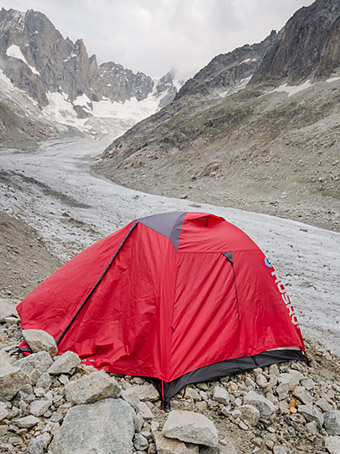
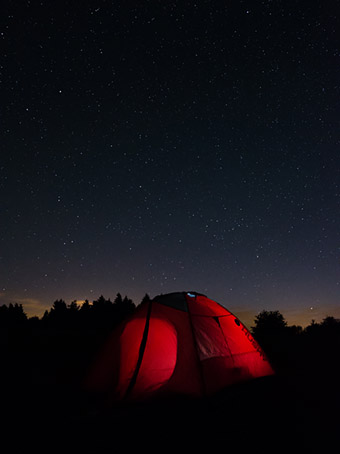
Hiking to a collecting site requires more wisdom and experience than you'd realize - and these are both usually gained only after you've left something critical at home. You will also remember hauling all the unnecessary stuff you brought because you thought "you might need it". Make a list beforehand, and assemble your equipment according to that. Hopefully this will help you to remember everything you will actually need, and rule out the things you won't.
Map, GPS and compass
Unless you know the collecting area very well, always take a map and compass with you, and be sure you know how to use them. These days, many people rely completely on outdoor GPS or their cell phone's navigation module. These devices definitely make your expedition easy and comfortable-that is, until you discover you don't have any signal or your battery dies. Be sure to load a quality topo map into your GPS!
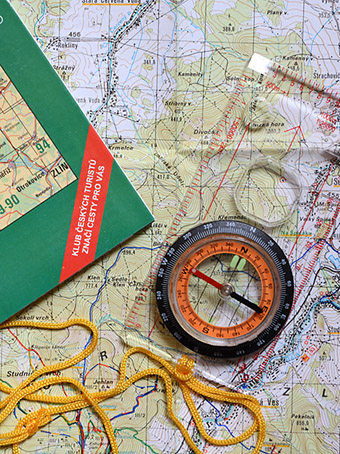
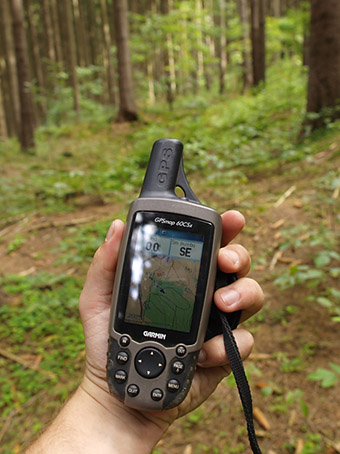
Boots
Solid trekking shoes or work boots protect your feet and ankles and keep you dry and warm. Some people even use wellington boots. Be aware that whatever footwear you choose, it will quickly suffer damage from contact with crushed rock. Because of this, it's not recommended that you buy yourself the most expensive pair of boots on the market. Work boots designed for construction sites usually last longest and are way cheaper than most hiking boots.
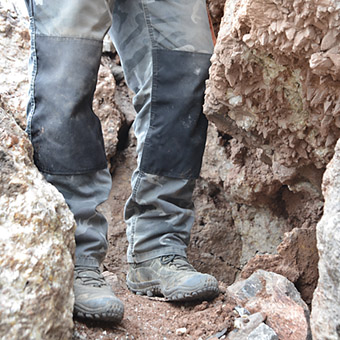
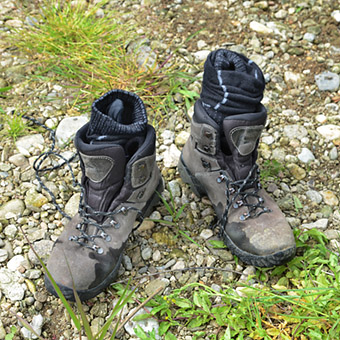
Rule of thumb: if you have to ask yourself, "I wonder how these would do out in the field?" they are probably not the right shoes for the job. With the boots mentioned above, the matter becomes very straightforward.
Clothes
You do not have to be a model to go rockhounding. Choosing proper clothes should be based on digging conditions and not on style. Keep in mind that staying warm and dry is the main goal. Digging is hard on clothes: better save that pricy Gore-Tex jacket you got for Christmas and take an old work jacket instead.
Regardless of the weather, always wear jeans or trousers to protect your legs from sunburn, the scrapes and scratches dealt out by rocks and briars alike, and insects. Trousers also protect diggers in the USA from the ravages of poison ivy and poison oak.
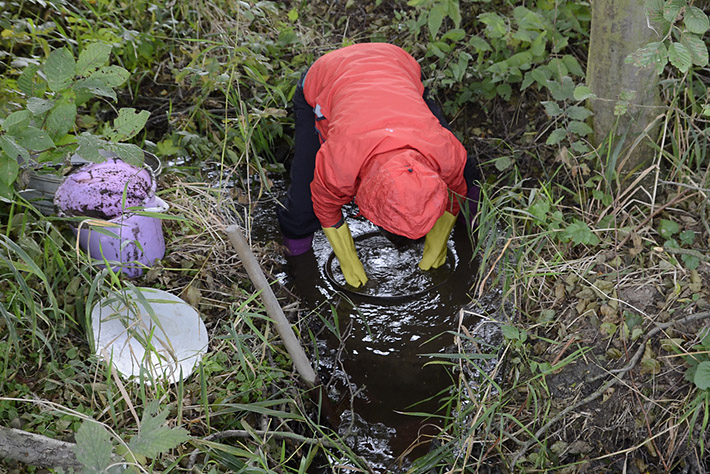
Likewise, your choice of socks should be made carefully. Although it's not advisable to buy the most expensive shoes, buying better socks like those with merino wool or smart wool - socks that will wick away moisture and keep your feet comfortable - is advisable. These are also very durable, and will far outlast any lighter weight socks you might have.
In both warm and cool weather, dress in layers. That chilly April morning might have you wanting to wear your big heavy sweater, but by 10 AM you'll wish you'd worn a t-shirt under it. Try to use clothes made with natural fibres like cotton or wool: these breathe better than those made with synthetic fibres (the latter can be extremely durable - and extremely hot).
Warm weather suggestions: avoid wearing shorts. Collectors in the US will tell you horror stories about poison ivy and oak, ticks, chiggers, and mosquitos. Long pants are ALWAYS the best choice. Men: if you're prone to becoming too hot for even a t-shirt, wear a sleeveless shirt underneath: conditions at a dig site are never kind to a guy without a shirt. A wide-brimmed hat or cap is good proof against the sun.
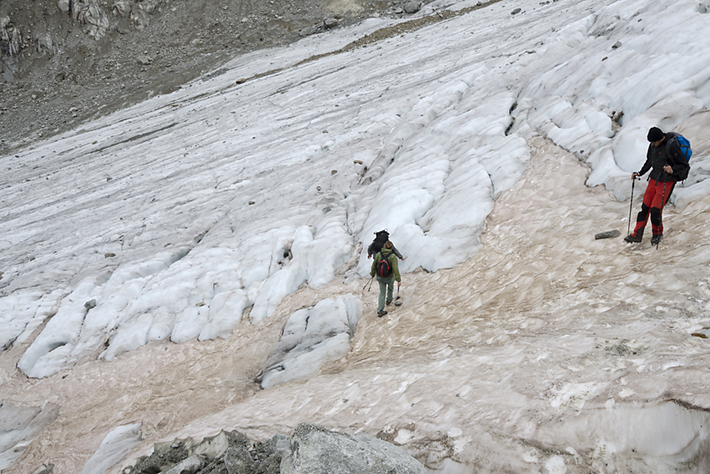
Cold weather suggestions: long underwear is advisable, and an extra pair of socks will never run amiss. Your layers might be made up of long underwear, t-shirt, flannel shirt, sweater, etc. You may want insulating liners to wear under your work gloves, and of course a good warm cap.
What else? As mentioned above, staying warm and dry are two of the most important goals in making your clothing choices. Be prepared for unfavorable weather with a good raincoat, extra socks and possibly an extra pair of jeans.
Food and drink
Regardless of the weather, if you are digging, you are likely working up a sweat. In order to keep from succumbing to dehydration, bring plenty of water and be sure to drink it. Sports drinks are also useful, and while soda is not forbidden, it does not really help that much with hydration.
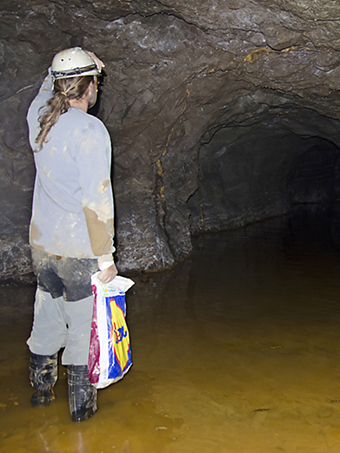
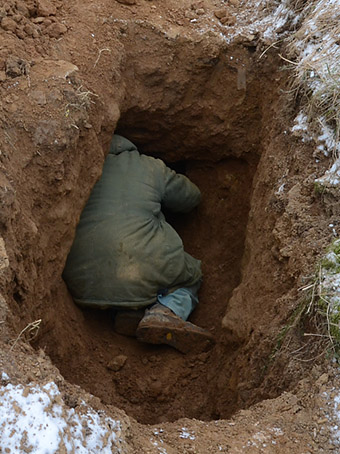
Since some trips turn out to be longer then expected, be sure to pack extra high-energy snacks. For one-day trips, I usually pack a cooked meal in a lunch box and some cookies or chocolate. I take 2 liters of water (or soda). Additionally, on chilly days, a one-litre thermos of hot tea or coffee is especially welcome.
Headlamp
How many of us have found some nice crystals or a loaded crystal pocket just at the dusk? How many have gotten a little lost, found an unexpected adit or needed to load the car in near darkness?

Of course, the answer to this is to have a good headlamp. The best headlamps have quality LED and use AA batteries (no proprietary chargers). Powerful models from Fenix using 4x AA last for 8+ hours even in the strong mode and well over 30 hours in normal mode. Special Petzl DUO are expensive killers for professionals. Some Black Diamond headlamps are also very good, but these are generally more expensive and not always that much better. Avoid cheap junk - these headlamps are very weak with false brightness numbers and they fall apart easily - usually at the worst possible moment.
First aid kit
Rockhounding is not the safest hobby on Earth, and for all our efforts to be safe you are bound to suffer some bruises, scratches and cuts. Assemble a kit containing at the very least some patches, bandages and antibiotic cream. Drive-in localities, nearby towns or quarries provide easy access to help and medical help. When you are headed into remote areas, be sure to pack a more complete first aid kit which includes not only bandages but also pain relievers (beware that many of these are illegal to carry abroad!), cold packs, bug bite treatment and bandages for sprains or pulled muscles . There are nice prepacked first aid kits available for outdoor enthusiasts. One of these should be always with you.

Always try to avoid carrying pills abroad. If you have to carry some sort of medication, be sure that it remains in its original sealed package. And better have a copy of prescription in english (or latin).
Your Backpack
Collecting minerals requires a strong and reliable backpack. As with boots, you do not want to spent a fortune on your backpack, because it is doomed to get abused and dirty. Military surplus backpacks are an excellent choice, as are older, second-hand packs. I prefer about 35-40 l backpack for short trips and big 50-60 l backpack for hauling a sizeable load of minerals and tools. For underground trips or really messy sites the sealed speleobag might be a good choice. It is fully waterproof and it keeps your things dry.
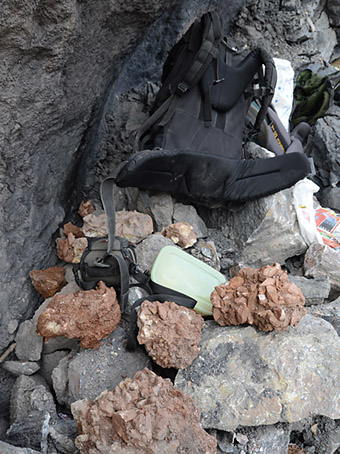
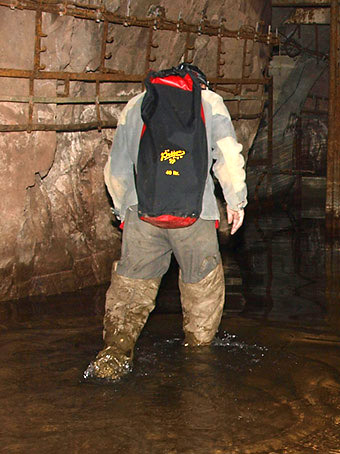
Even the smaller backpack should be able to carry some gear, food, water, tools and minerals. It should be able to carry up to 30-35 kg load - and I have experienced even loads well above 45 kg!
Collecting safety and tools
Most of the tools you will need were covered in-depth in the collecting tools article. Basically, it is better to buy good quality tools: in the end it is much cheaper, safer and will save you a lot of headaches. Do not forget to bring sturdy leather gloves for chiseling or handling sharp rocks. Decent safety goggles are a very wise - and necessary - investment.
Camera and cellphone
Proper documentation is one of the most important aspects of collecting trips. I recommend that you bring a camera - especially if it has a video mode. Some more recent cellphones are capable of providing pretty ok photos and videos, but keep in mind that that 5-7 x smaller sensor with its minuscule plastic lens is much worse then any real camera.
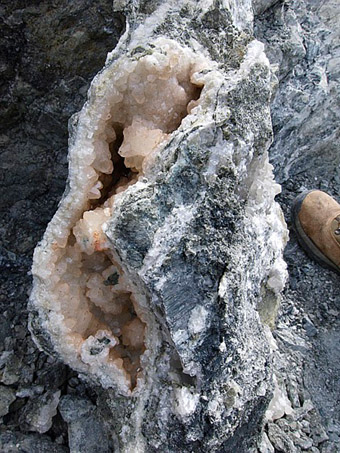
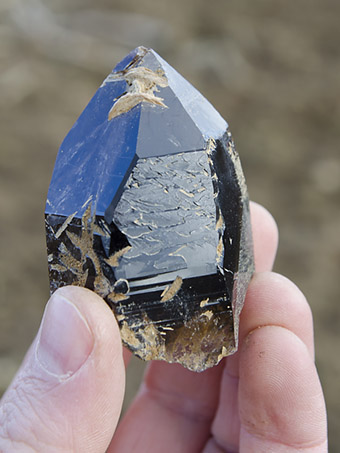
Be sure to charge all your devices - camera, cellphone or GPS before you leave. Do not forget the camera memory card at home! Pack extra batteries and that extra memory card if you have one.
The little things...
First of all, do not forget to pack your wallet and some cash. Remote towns like Sleepy Hollow usually have no ATM and they might not take your credit card. A good, sharp knife can solve many problems, particularly if it is a good old Swiss Army knife or multi-tool. Carry a small notebook or diary with a pen for clear weather and a pencil for foul. If the locality is new to you, it is also a good idea to print the description or photos of the minerals you're looking for, otherwise you might overlook more rare minerals because you simply do not recognize them.
What else should you bring? Things like toilet paper, sunscreen, bug spray and a wide brimmed hat! Be sure to make a checklist and don't forget the water!





Comments